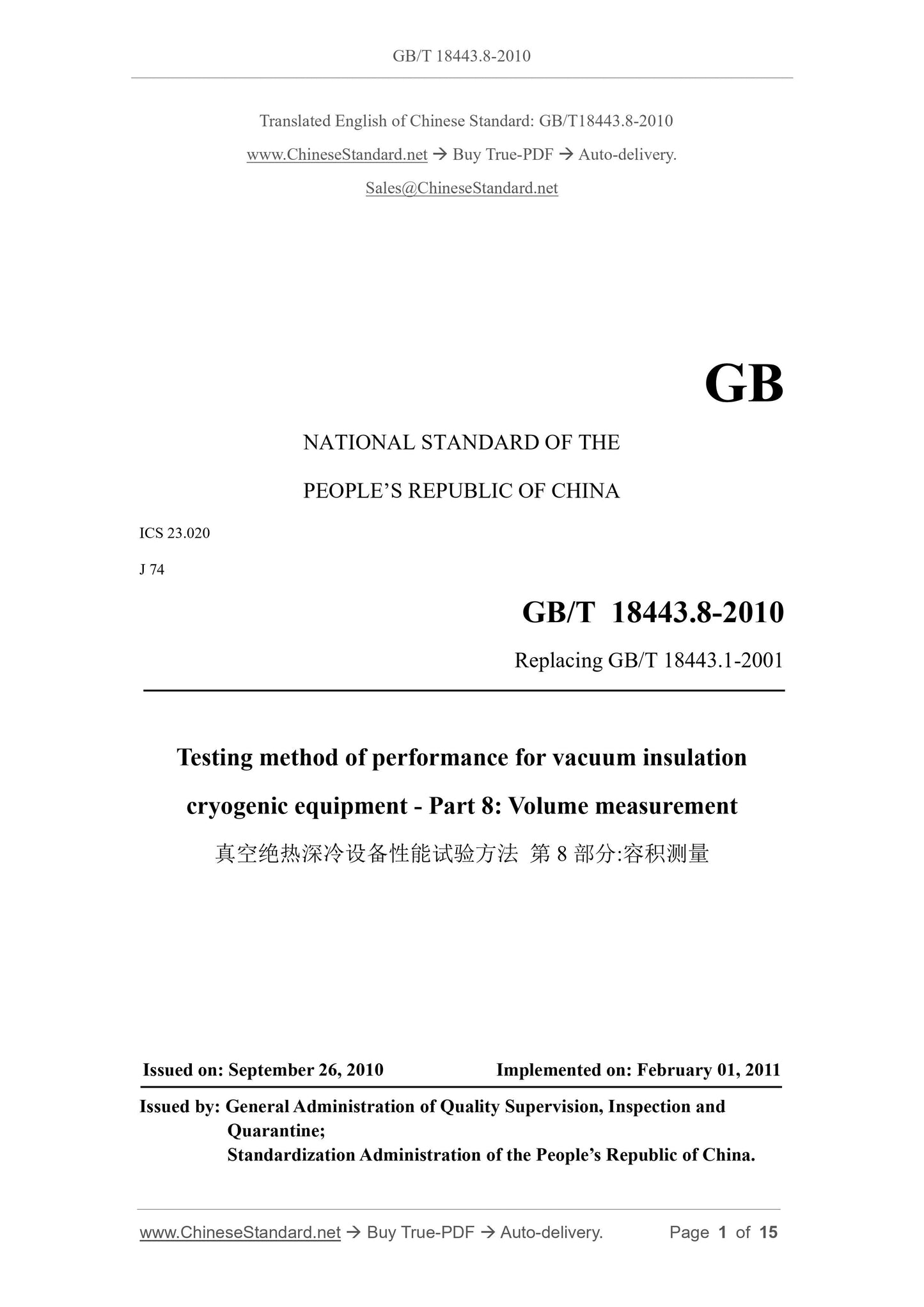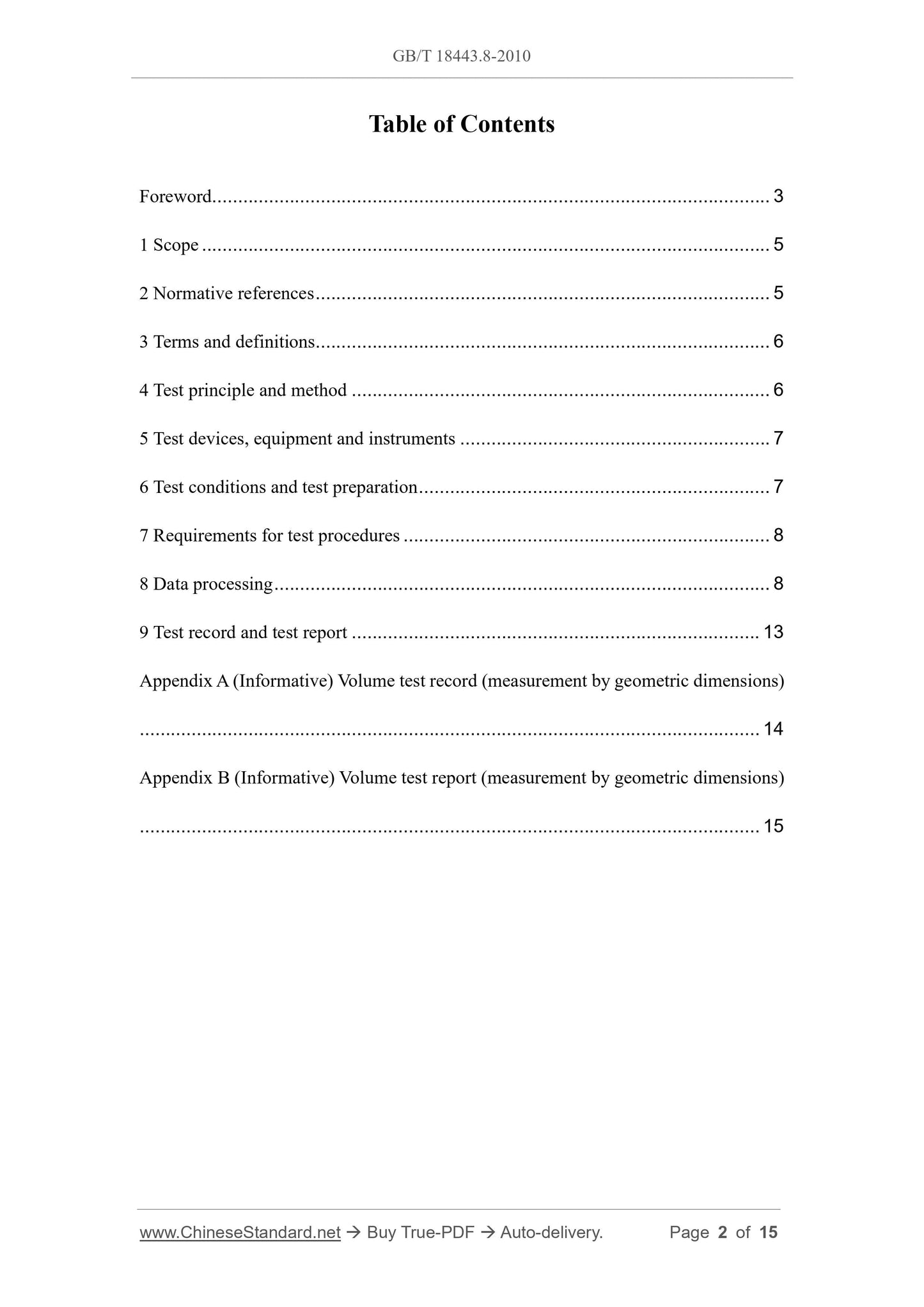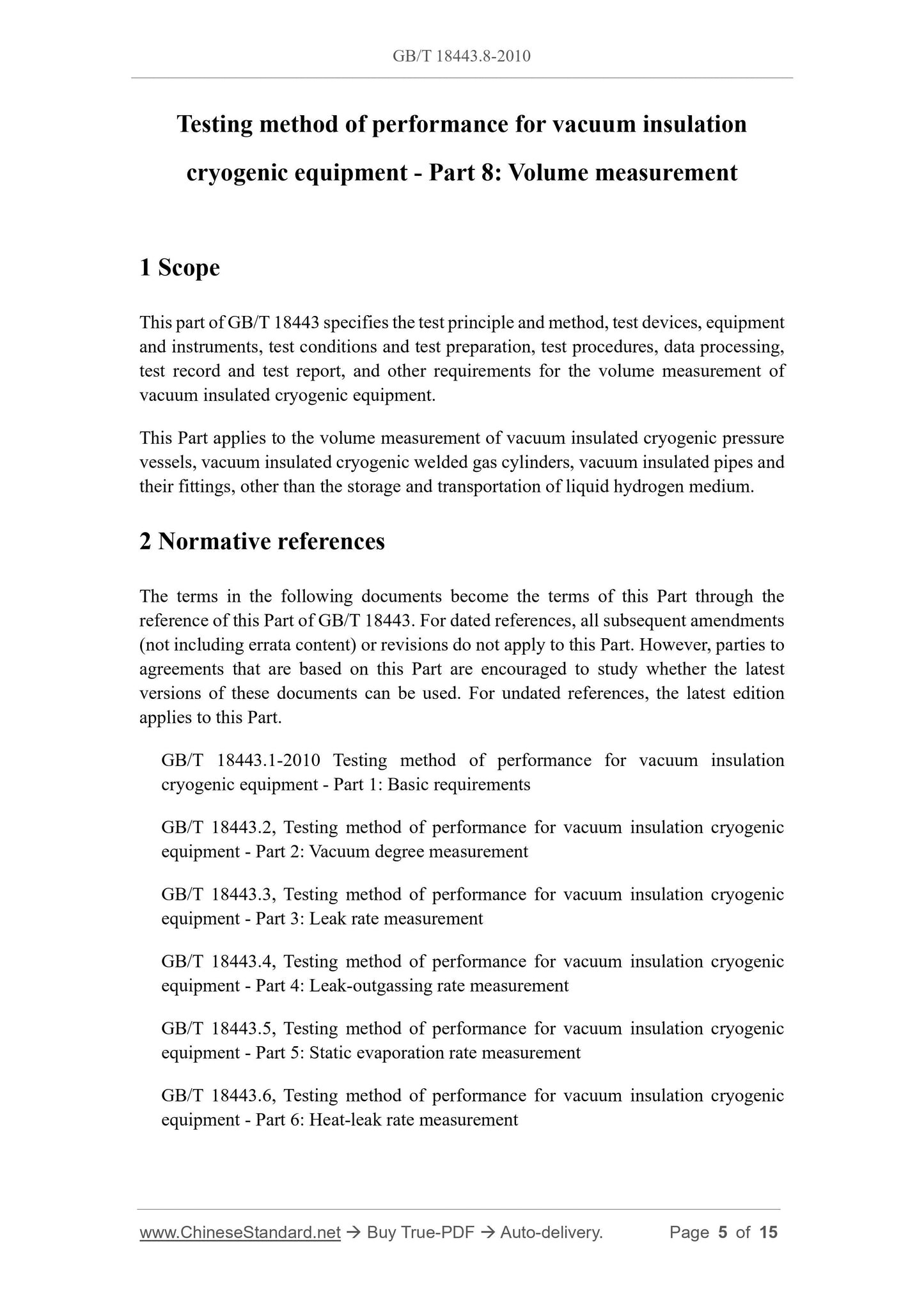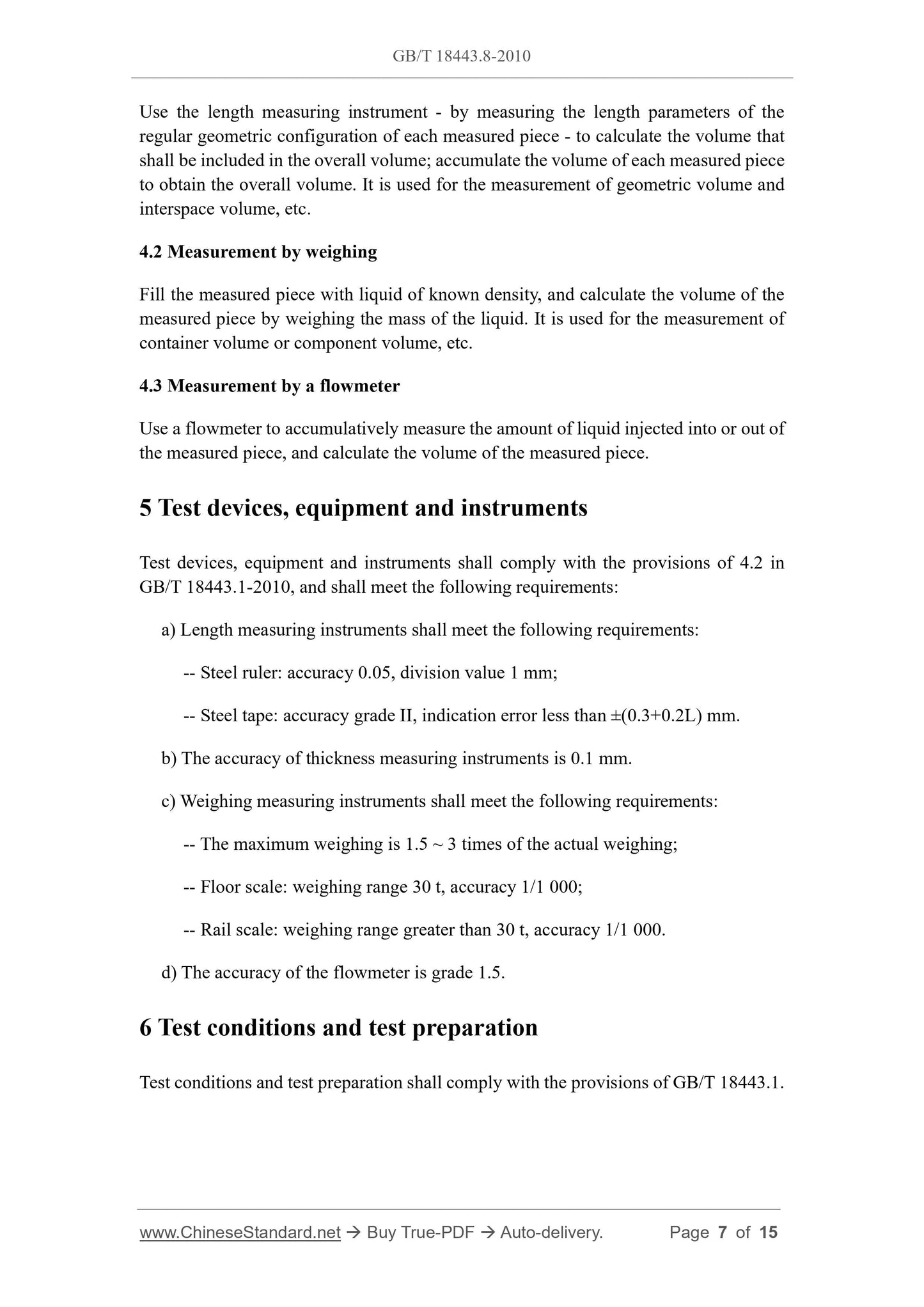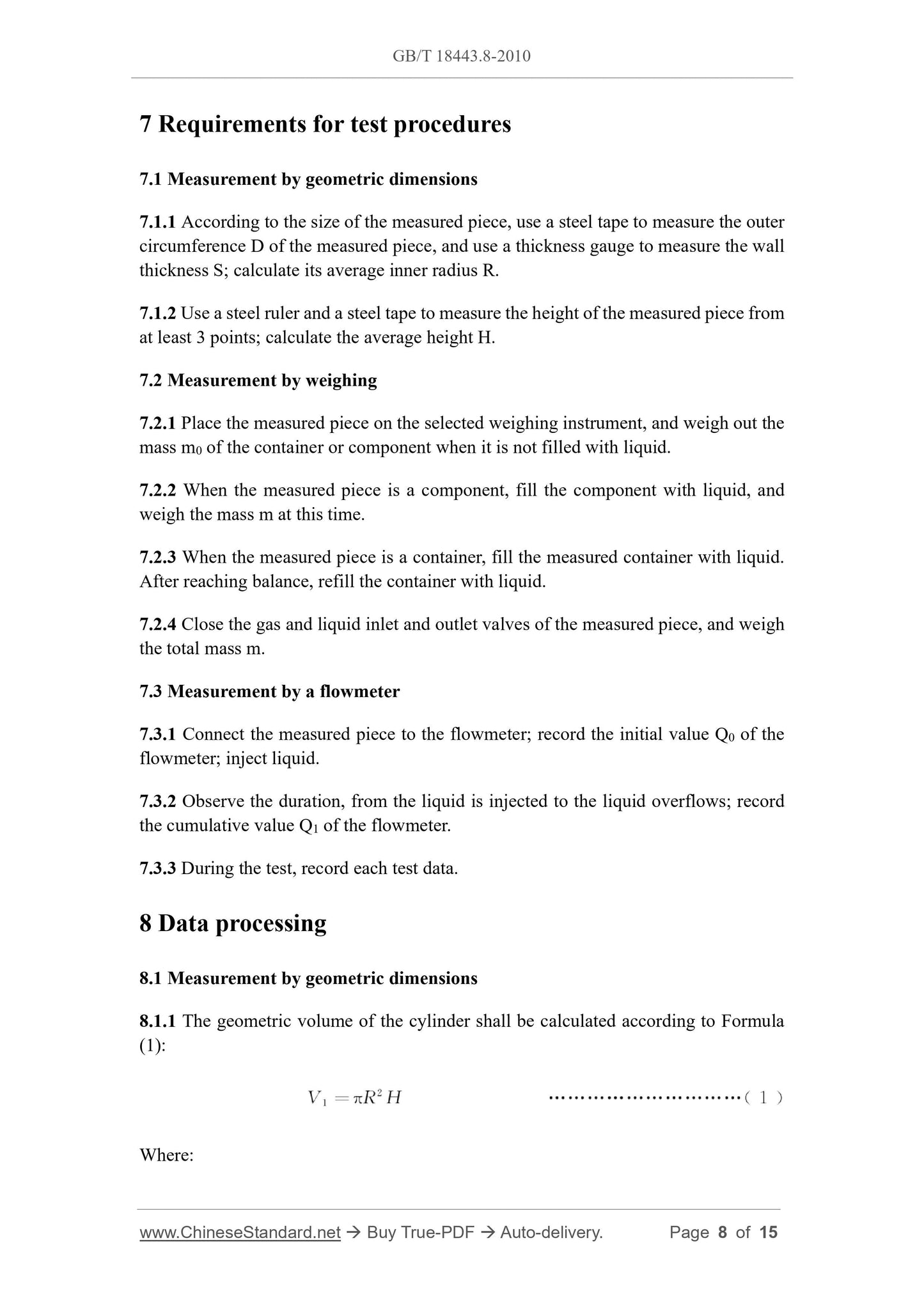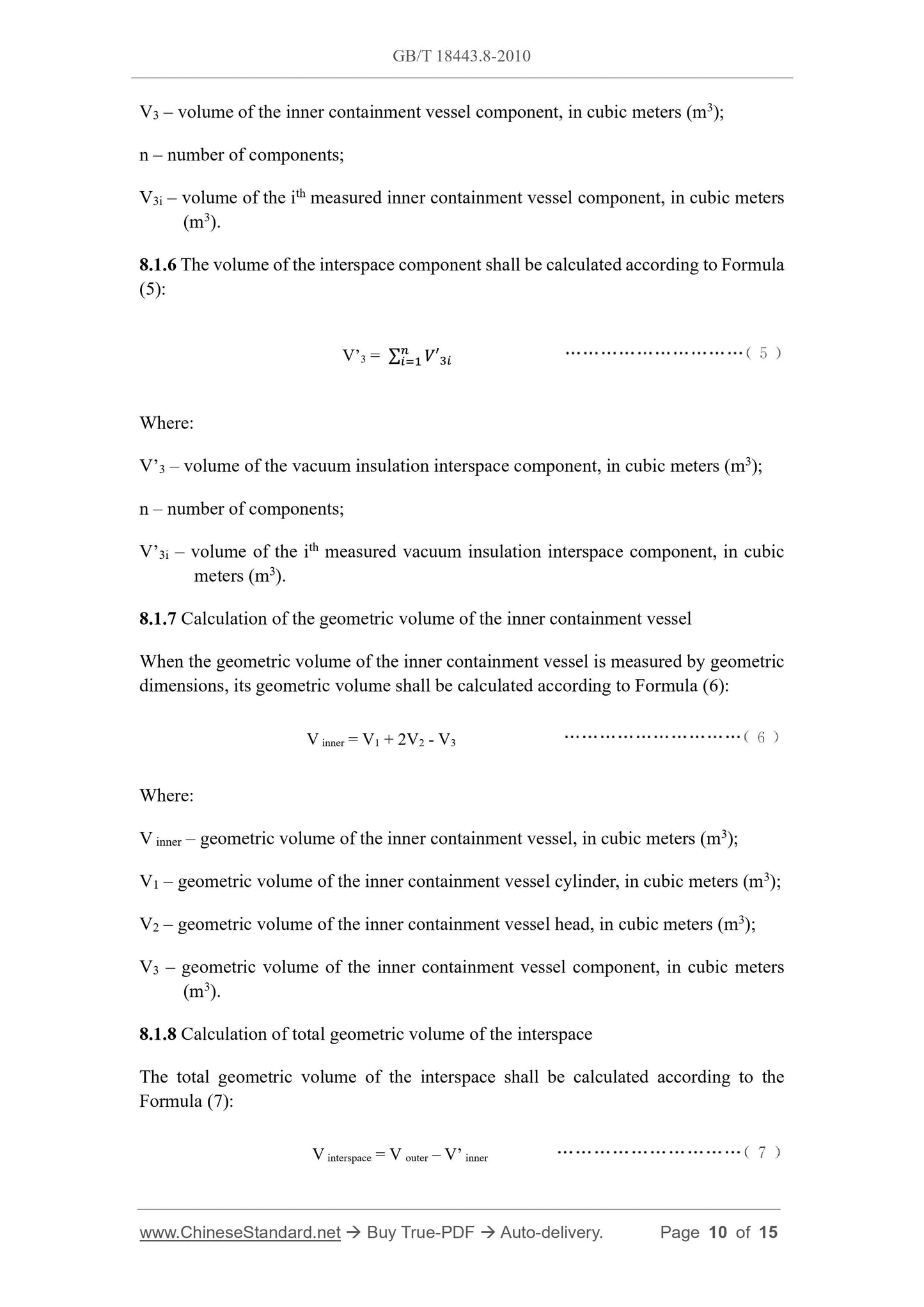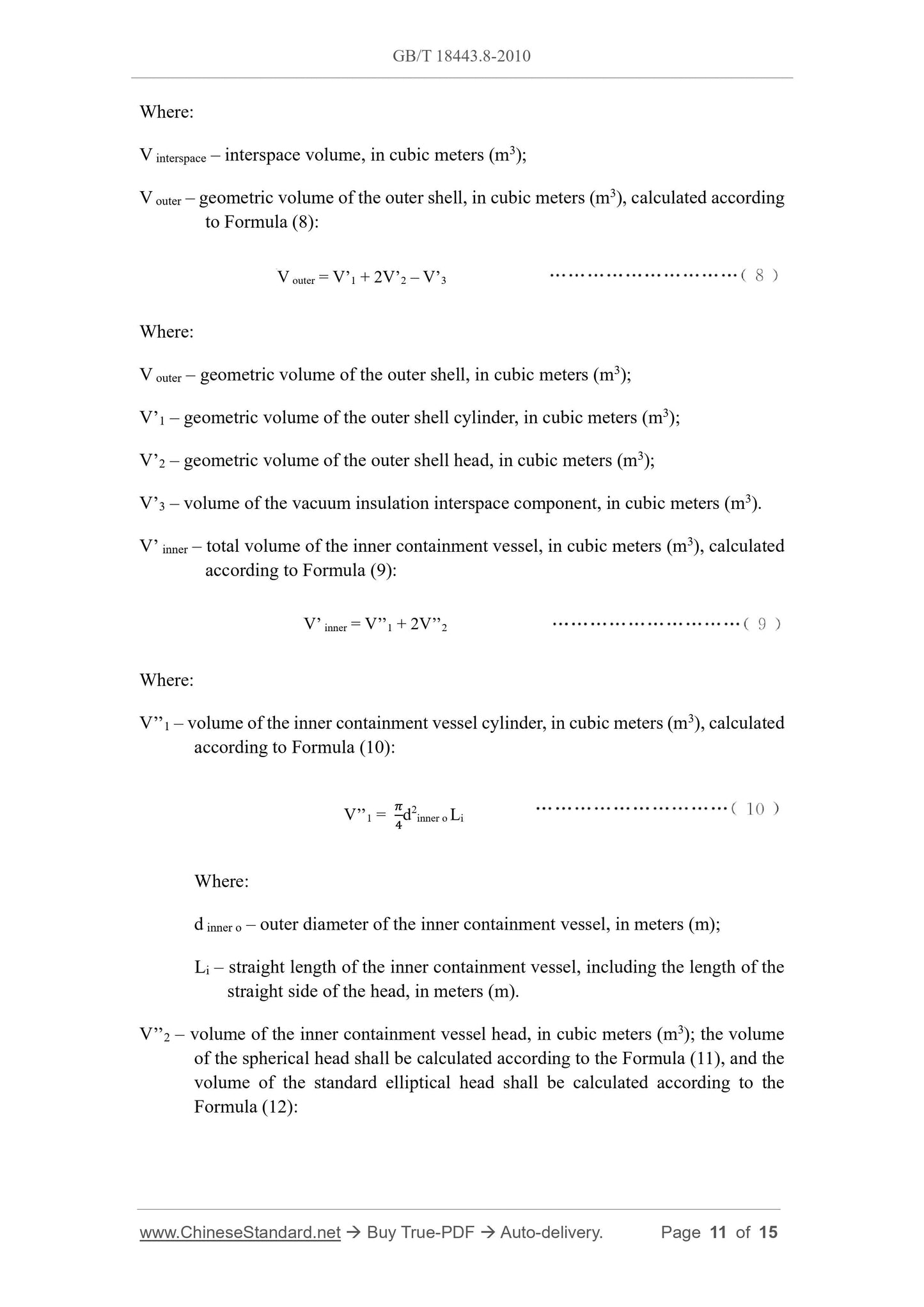1
/
of
7
www.ChineseStandard.us -- Field Test Asia Pte. Ltd.
GB/T 18443.8-2010 English PDF (GB/T18443.8-2010)
GB/T 18443.8-2010 English PDF (GB/T18443.8-2010)
Regular price
$185.00
Regular price
Sale price
$185.00
Unit price
/
per
Shipping calculated at checkout.
Couldn't load pickup availability
GB/T 18443.8-2010: Testing method of performance for vacuum insulation cryogenic equipment - Part 8: Volume measurement
Delivery: 9 seconds. Download (and Email) true-PDF + Invoice.Get Quotation: Click GB/T 18443.8-2010 (Self-service in 1-minute)
Newer / historical versions: GB/T 18443.8-2010
Preview True-PDF
Scope
This part of GB/T 18443 specifies the test principle and method, test devices, equipmentand instruments, test conditions and test preparation, test procedures, data processing,
test record and test report, and other requirements for the volume measurement of
vacuum insulated cryogenic equipment.
This Part applies to the volume measurement of vacuum insulated cryogenic pressure
vessels, vacuum insulated cryogenic welded gas cylinders, vacuum insulated pipes and
their fittings, other than the storage and transportation of liquid hydrogen medium.
Basic Data
| Standard ID | GB/T 18443.8-2010 (GB/T18443.8-2010) |
| Description (Translated English) | Testing method of performance for vacuum insulation cryogenic equipment - Part 8: Volume measurement |
| Sector / Industry | National Standard (Recommended) |
| Classification of Chinese Standard | J74 |
| Classification of International Standard | 23.020 |
| Word Count Estimation | 10,121 |
| Date of Issue | 2010-09-26 |
| Date of Implementation | 2011-02-01 |
| Older Standard (superseded by this standard) | GB/T 18443.1-2001 |
| Quoted Standard | GB/T 18443.1-2010; GB/T 18443.2; GB/T 18443.3; GB/T 18443.4; GB/T 18443.5; GB/T 18443.6; GB/T 18443.7; JB/T 4746 |
| Regulation (derived from) | National Standard Approval Announcement 2010 No.6 (Total No.161) |
| Issuing agency(ies) | General Administration of Quality Supervision, Inspection and Quarantine of the People's Republic of China, Standardization Administration of the People's Republic of China |
| Summary | This standard specifies the principles and methods of test vacuum insulation cryogenic equipment volume measurement, equipment and instruments, , test conditions and test preparation, test procedure, test equipment and test data processing records and test reporting requirements. Suitable for liquid hydrogen storage medium except vacuum insulated cryogenic pressure vessel, vacuum insulated cryogenic welding cylinders, measuring vacuum insulated pipe and pipe fittings, such as vacuum insulated cryogenic equipment volume. |
Share
